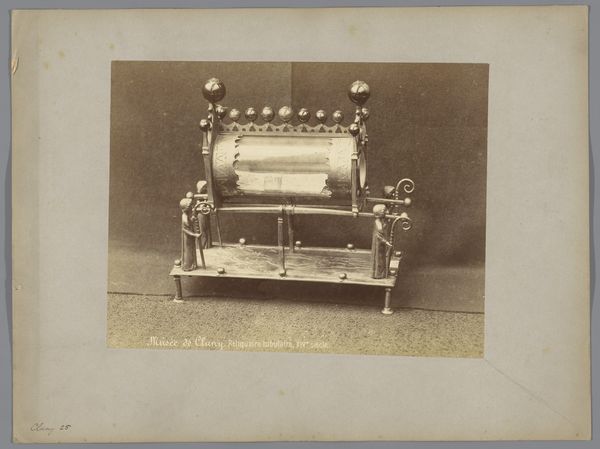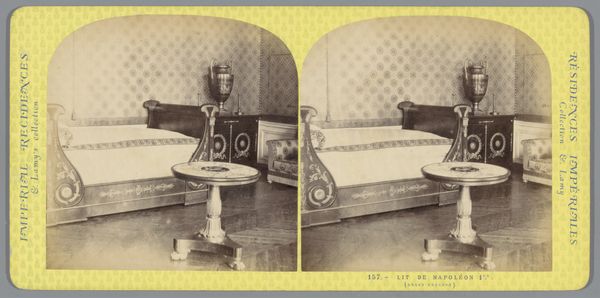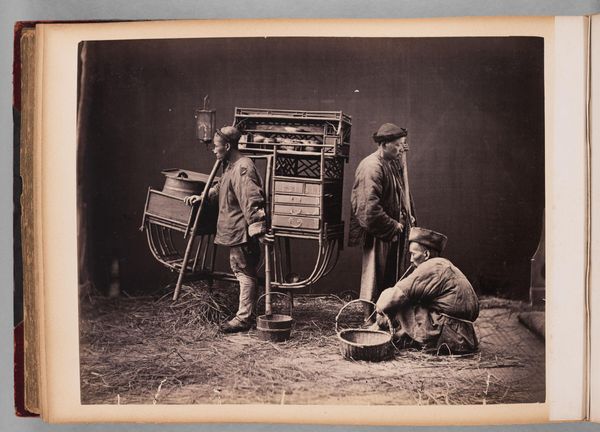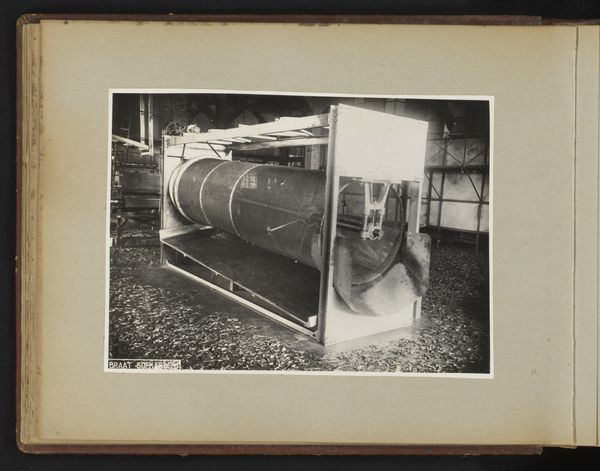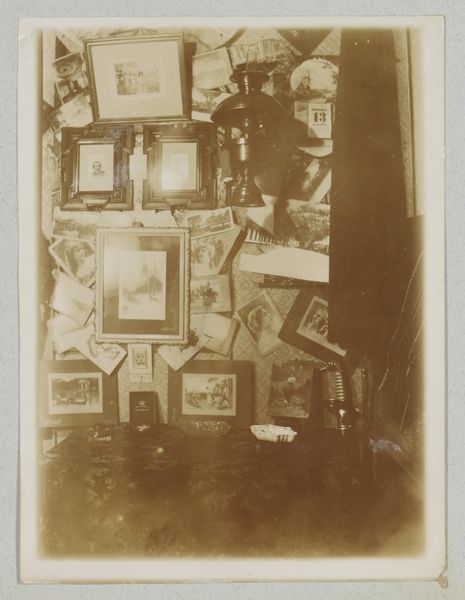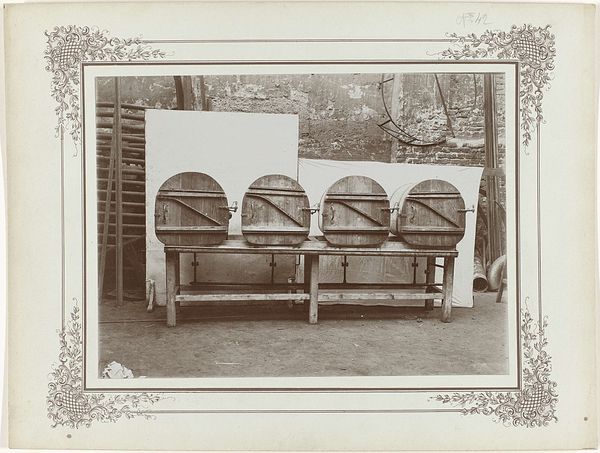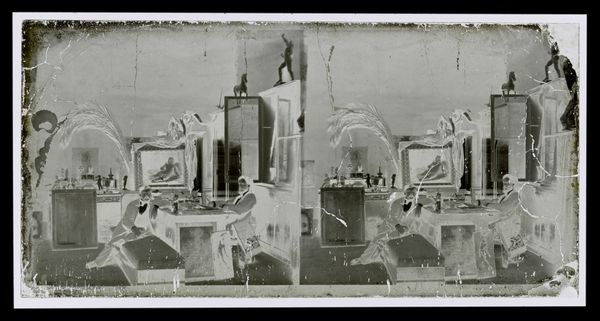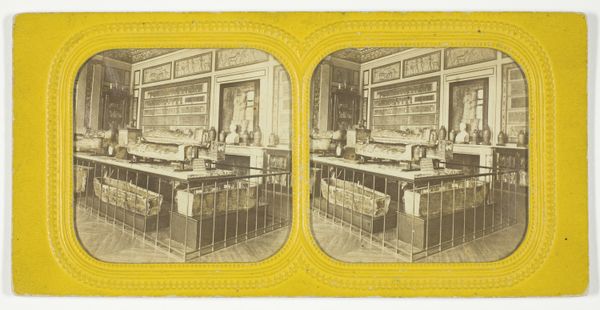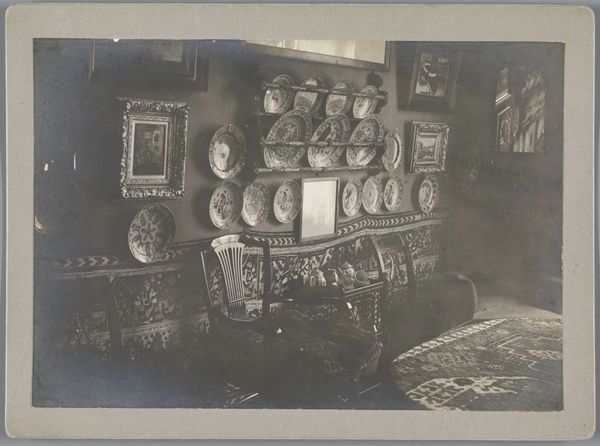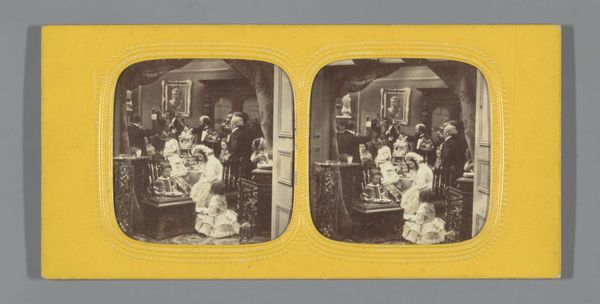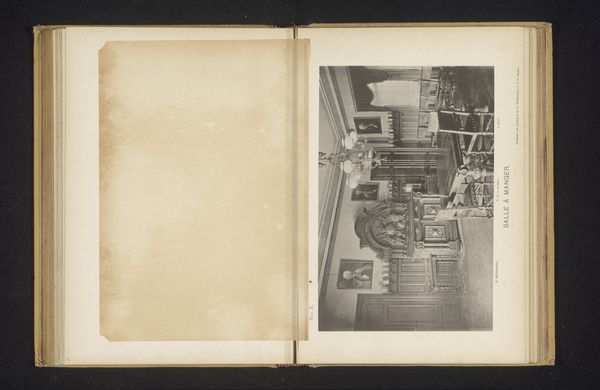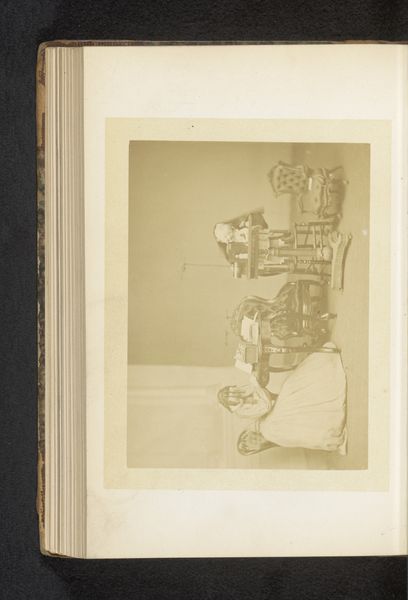
photography
#
still-life-photography
#
16_19th-century
#
photography
#
united-states
Dimensions: 7.9 × 7.7 cm (each image); 8.7 × 17.6 cm (card)
Copyright: Public Domain
Curator: This is "Beekers' Revolving Stereoscopes," a photograph taken sometime between 1875 and 1899, here at the Art Institute. Editor: My first thought? An army of little robots waiting to be activated. The monochrome tone gives it such an antique, mechanical feel. Curator: Yes, it’s definitely that turn-of-the-century fascination with technology, presented in a formal, almost portrait-like manner. Look at the precision of the image and the varied forms and arrangement. Editor: I am drawn to the repetitive, almost mass-produced aesthetic even with unique variations. Given its origins as a stereograph—made for mass consumption to simulate three-dimensionality. Are we talking about early industrial-era desire shaping our very vision? Curator: Absolutely, these objects were made with popular consumption in mind. Each apparatus presents subtle aesthetic adjustments in metal work, creating visual and commodity differentiation for the consumer. They're tools of perception being meticulously crafted. One is seeing but also being seen. Editor: I suppose my question, as always, centers on what drove Beekers—and maybe also his workforce—to construct these intricate viewing devices? Mass leisure time was only barely becoming normalized, with its commodified culture and experiences for consumers... Curator: I imagine, at that time, the potential to conjure three-dimensionality for visual delight via a mass producible object probably created an appealing drive that overrode mundane labour... Even these objects presented an idea, the technological possibility, that the modern world may have seemed like an extraordinary, slightly disorienting thing, Editor: Maybe Beekers simply saw a market and capitalized! It's the story of so much invention. And, honestly, while I started by thinking "robots," there's something quietly magical here too. Curator: Exactly! Even through mass consumption, these objects reflect an interest in how we perceive the world around us, but perhaps also...the power of industrial manufacture?
Comments
No comments
Be the first to comment and join the conversation on the ultimate creative platform.
